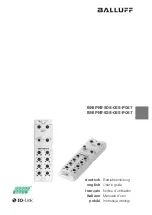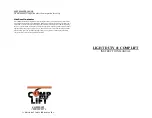
Page 4 - 2
TL49J
FAULT FINDING
It is recommended that fault finding is only carried out by technically competent personnel. Whilst
every effort has been made to ensure these procedures are as comprehensive as possible, they do
not cover all eventualities.
If difficulty is experienced in identifying a fault, contact Snorkel for assistance. A list of troubleshoot
-
ing notes are also listed below to help with solutions to faults identified.
ISSUE
REMEDY
Engine will not start - if fitted.
Ensure there is enough fuel in the tank.
Switch off emergency stops.
Turn on the engine ignition.
Ensure the batteries are fully charged.
If the engine is cold, apply the choke manually.
Check engine blade fuse.
DC motor not turning when trying to lower the
outriggers.
Ensure the ground control select is turned to
ground controls.
Check the battery level. The battery should be
2/3 charged.
Check the motor contactor.
Check the motor brushes.
Check the motor fuse.
Ensure the emergency stop button is not
engaged.
DC motor turning but not able to operate
outriggers.
Ensure the top boom is lowered and the boom
switch is activated.
Check that the limit switch arm is secure on
the boom switch.
Ensure the diverter valve is de-activated. Re-
fer to the hydraulic circuit.
Check the hydraulic pressure. If there’s no
pressure, check the pump.
DC motor not turning after outriggers have been
lowered.
Check that the key selector switch is not in the
off position.
Ensure the emergency stop buttons are not
engaged.
If the overload alarm still sounds, check the
outrigger switches.
Boom will not raise/lower when the control lever
is operated and DC motor running.
Ensure the right control select is in use.
Check the oil level.
Ensure that the diverter valve is activated.
Check that the other control valve has all
spools in centre position.
Check the hydraulic pressure. If there’s no
pressure, check the pump.
Check that the emergency lowering valve is
not opened on the cylinder.
Check for obstructions.
TROUBLESHOOTING
















































